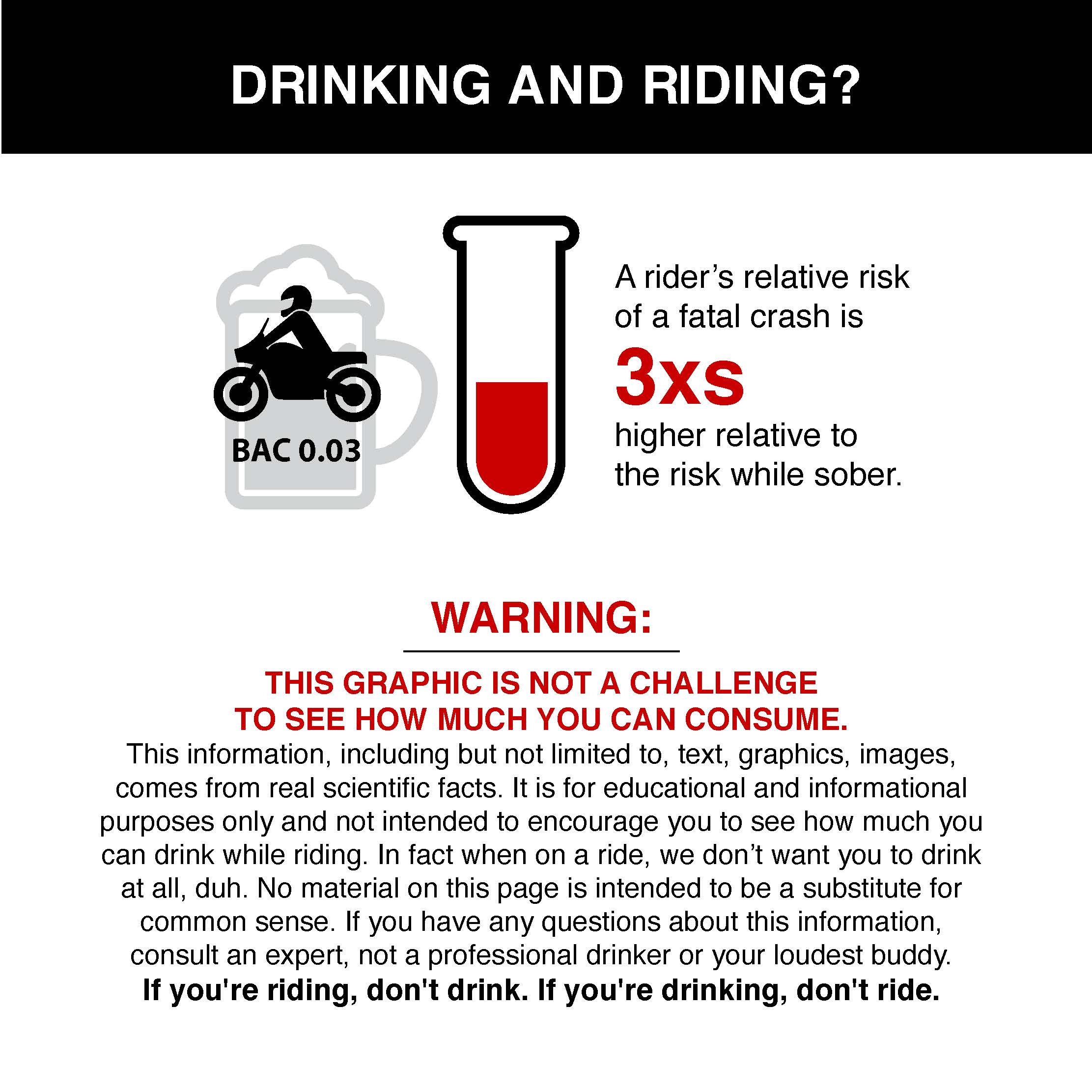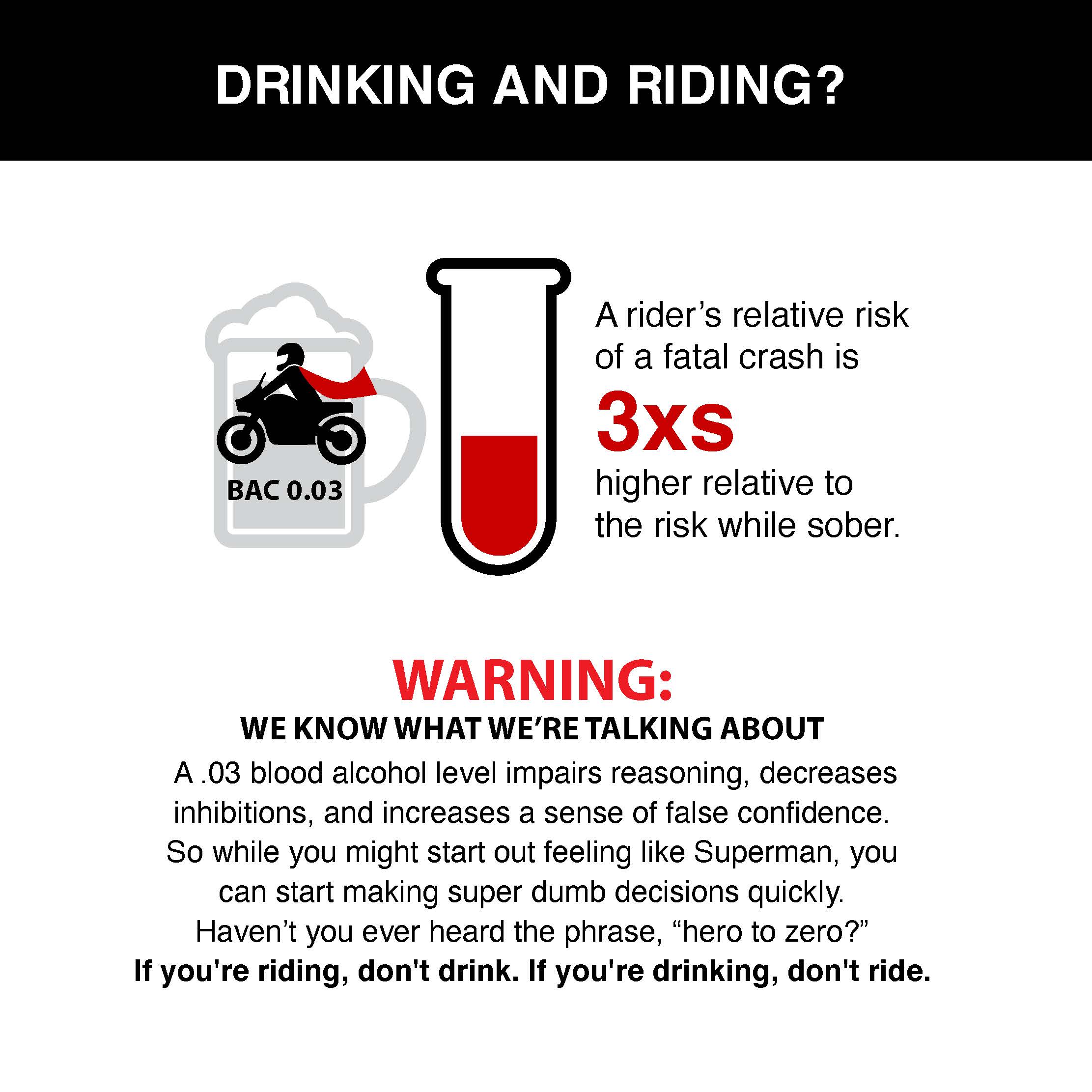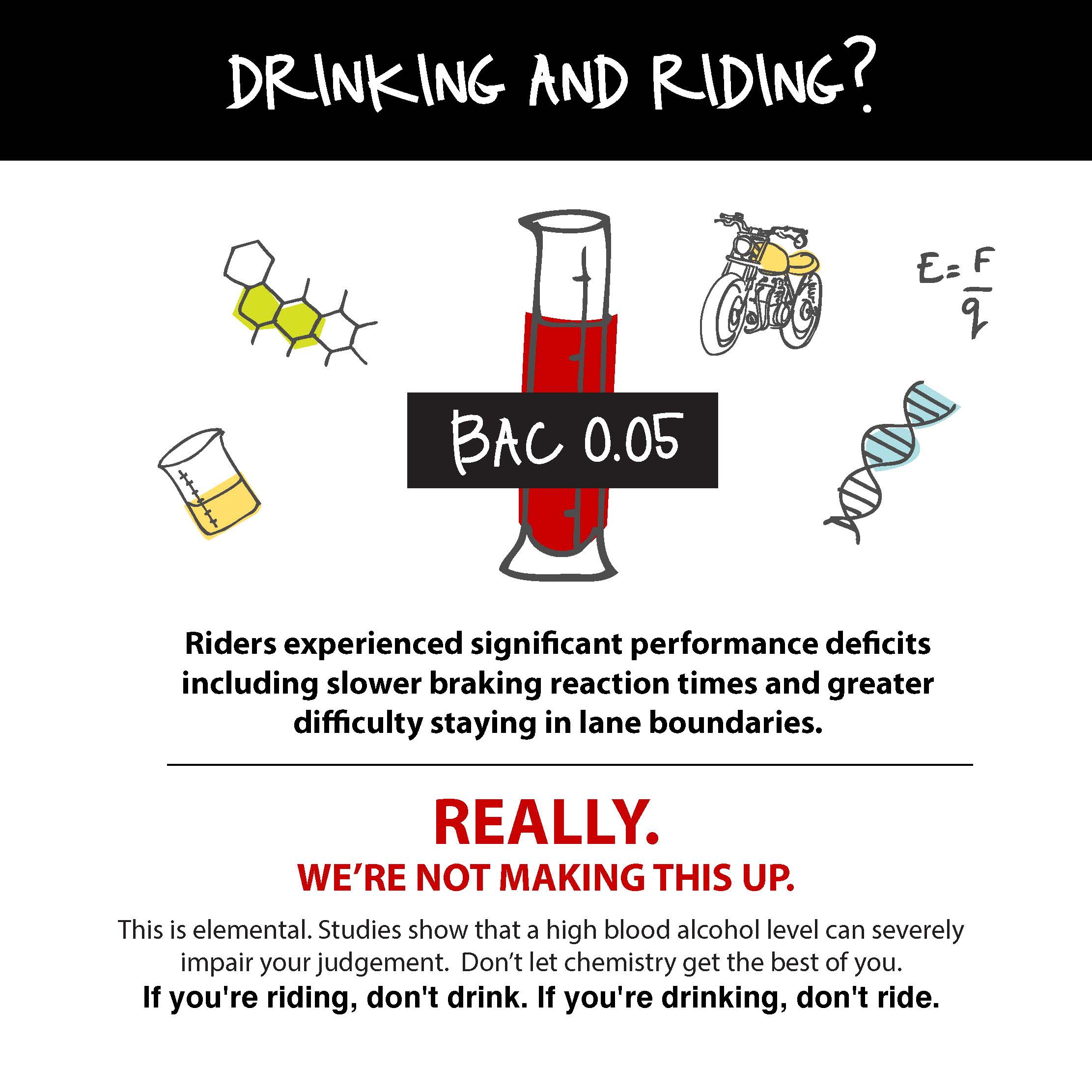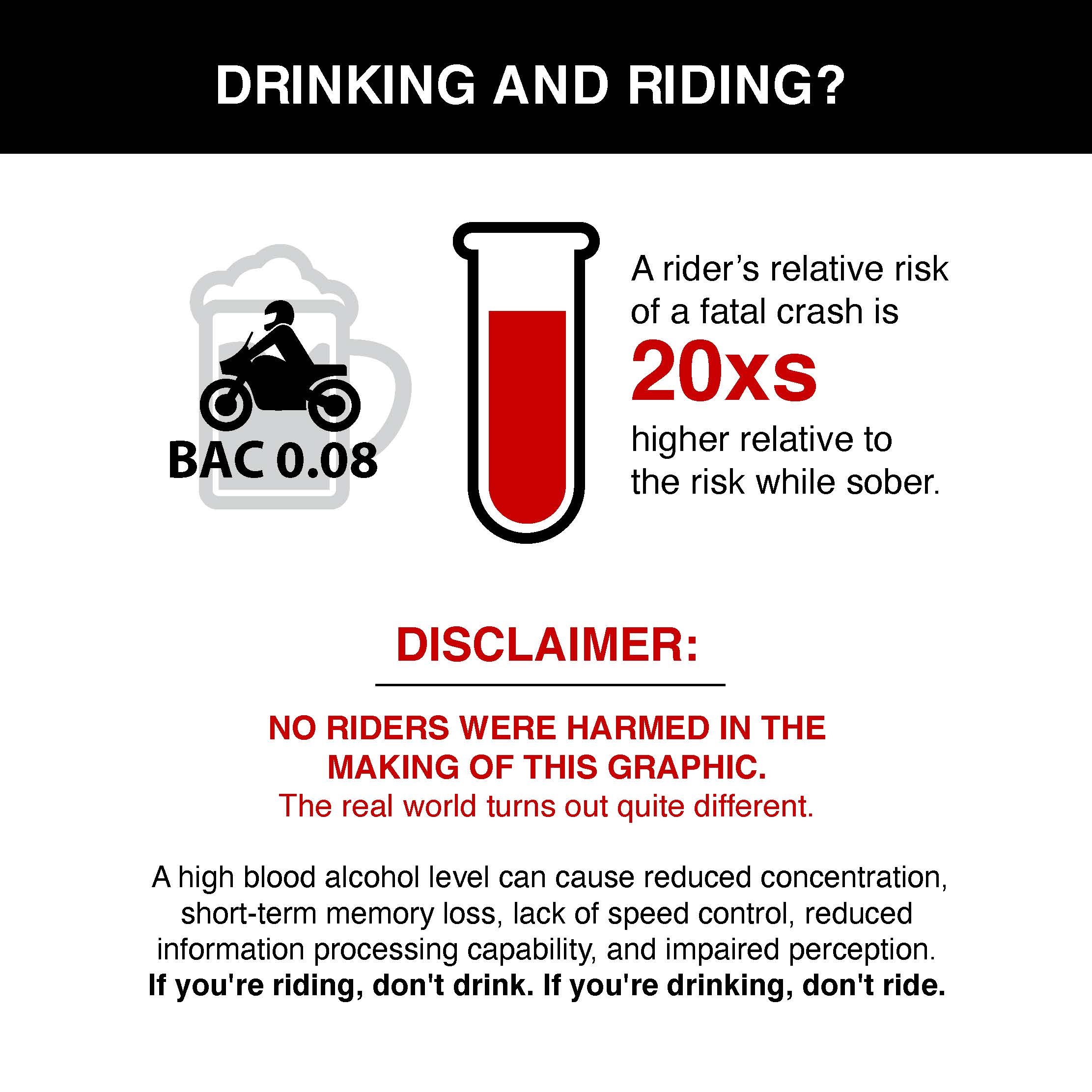Drinking while riding was a factor in over a third of all motorcycle fatalities from 2012 to 2020. Because riding requires more skill and concentration than driving a four-wheeled vehicle, even relatively low levels of alcohol in the bloodstream (BAC) can be deadly: a rider with a BAC of 0.03 is three times more likely than a sober rider to be involved in a fatal crash. At the legal DUI limit of BAC 0.08, a rider’s fatality risk is 20 times higher than it would be if he/she were sober.
The decision to ride after drinking alcohol is a personal one; however, there are strategies that the rider community can use to help prevent impaired-riding crashes and protect other riders.
Resources
Made possible through a Texas Department of Transportation traffic safety grant, researchers at the Texas A&M Transportation Institute have developed resources intended to reduce the number of impaired riding crashes.
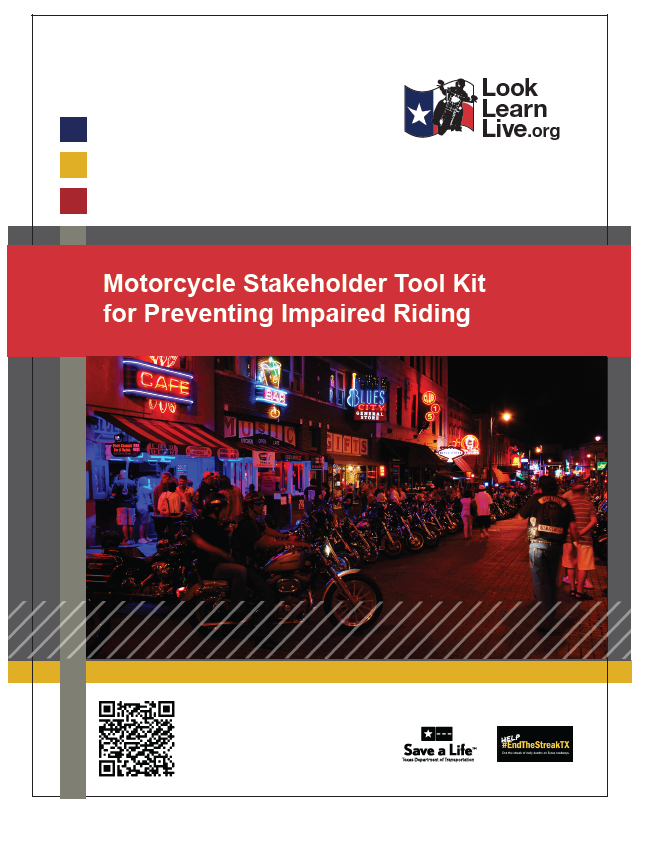
Download the Motorcycle Stakeholder Tool Kit for Preventing Impaired Riding!

